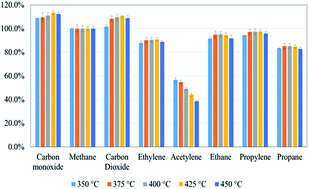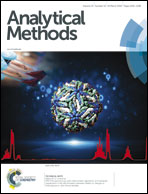In situ methanation with flame ionization detection for the determination of carbon dioxide in various matrices
Abstract
An analytical technique that employs in situ methanation with flame ionization detection for the measurement of carbon dioxide in various matrices has been developed and implemented. The methanation of carbon dioxide to methane is conducted in situ within the 3D printed jet of a flame ionization detector without any additional hardware required. Quantification of carbon dioxide at the parts-per-million level over the range of 1–10 000 ppm (v/v) with a respectable precision of less than 5% RSD (n = 10) was achieved. The total analysis time is less than 6 min. Linearity with a correlation coefficient of R2 = 0.9995 and a measured recovery of >99% under the specified conditions were achieved. Leveraging the additional back pressure generated by the modified jet assembly, a novel strategy of post-column backflushing with the detector fuel gas was successfully innovated to provide advantageous synergy for enhanced reliability and throughput of the analytical system. This backflushing approach had no known negative impact on the conversion efficiency or performance of the jet assembly. The utility of this technique was demonstrated with relevant carbon dioxide applications in various sectors including the carbonated beverage, environmental, and chemical industries.

- This article is part of the themed collection: Analytical Methods Recent HOT articles


 Please wait while we load your content...
Please wait while we load your content...